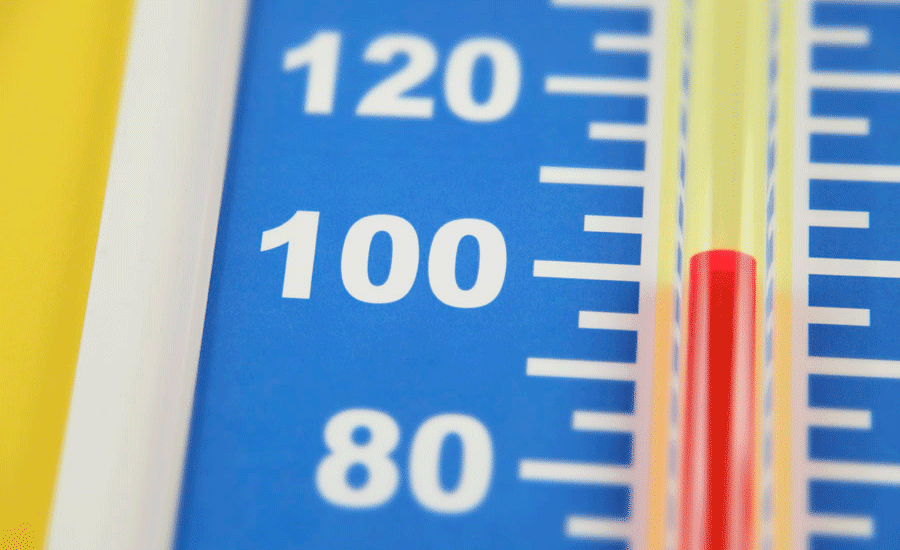Workers in many fields – construction, landscaping, oil and gas extraction, emergency response, firefighters among others – toil in high heat stress conditions. These tasks can lead to rapid increases in body temperature that raise the risk of heat-related illnesses.
Mitigating work-related heat illnesses has traditionally relied on monitoring external environmental heat stress, such as wet-bulb temperature, rather than focusing on physiological strain responses – heart rate and skin and core temperatures. But it’s challenging to protect workers on an individual basis from heat stress illnesses due to individual factors – age, sex, chronic disease, medication use, fitness, acclimation hydration status, shift duration, illness, among others.
Wearable technology advances have made it possible to monitor one or more physiological factors of heat strain. R&D trials and pilots come from sports performance, the military, NASA, and start-up companies. After all, many workers are considered industrial athletes, and many wear heavy personal protective equipment (PPE) akin to soldiers.
One technological example: a wearable heat-stroke-detection-device has early notification capability. Physical sensors, such as galvanic skin response, heart beat, and body temperature, collect medical data from working individuals. A risk evaluation functional component detects the signals of heat stroke for users. If a dangerous situation is detected, the device activates an alert function to remind the user to respond appropriated – add safely – to avoid heat stroke.
Another device has been used to monitor student athletes for heat exhaustion. When training at summer camps reaches upwards of 100◦F, the system alerts to a student’s rising core temperature before he shows physical signs of illness. He can then be immediately cooled and hydrated for full recovery.
In the first decade of the 2000s, the number of heat-related deaths in sports reached 690 per year, with thousands more athletes visiting emergency rooms annually. Teams – and employers – are moving to wearables that allow users to monitor the factors that go into heat exhaustion.
Sweat plays a clear and distinct role in helping the body cool down. One wearable, a wristband, features a biosensor strip that reads the chemical makeup of the user’s sweat. When this data is combined with physical factors such as heart rate and pace, the band can alert the wearer when to rehydrate, take a break, or replenish electrolytes.
Another heat stress tracker detects when heat-related conditions are not safe, even before your body does. The work environment is tracked for wind speed, temperature, air velocity and other factors to determine what environmental factors may make any location dangerous to employees.
First responders’ health and comfort is one of the early beneficiaries of wearable sensors for monitoring heat stress. Working or training in hot or dangerous environments, first responders are further burdened by the weight and heat-retaining nature of their PPE. This combination of risks can easily lead to overheating. Not surprisingly, there is increasing interest in technology that can report wearers’ vital signs both in real time and for post-incident analysis.
Another heat-related risk for first responders: a recent study reported that prolonged long-term exposure to heat could lead to cardiac issues; previously it was believed that immediate exposures to heat stress was the risk factor. So there is a possible cumulative effect. Technology developers say firefighters need to have their heat risk monitored on every exposure, and this should be monitored over time by the occupational safety and health team.
Also at risk of heat stress illnesses: law enforcement officers, riot police, hazmat response teams, oil and gas workers, construction workers, and nuclear safety personnel. Technology developers are now working on multiple pilots and research studies with these at-risk populations. One solution being tested sets upper and lower thresholds for body temperature, heart and breathing rate, and combines this with an alert index. If a worker shows clear signs of heat stress based on the data collected, a color marker would alert incident commanders to intervene without having to interpret the data.
Technology developers are also focusing on resolving the trade-off between sensor accuracy and user comfort. The goal is to have an accurate sensor that is still comfortable to wear for long periods of intensive use. Much trial and testing is on-going to tackle this challenge.
One example of a challenge: in many environments workers get very hot and perspire, and the saline in the sweat can interfere with some of the signals trying to be collected. Technologies are being developed to protect the system from human perspiration.
Wearables R&D confront challenges as well as enhance applications. One device has an interface that allows it to integrate with external sensors, allowing environmental data such as pollution, noise, gas detection, video and weather data to be added. This provides complete situational awareness for human heat stress, safety and performance monitoring.
When choosing new technology for heat stress monitoring and illness prevention, consider whether devices produce the outcomes you want; have been developed based on real-world needs; and have been tested and proven effective in applied studies in different settings. At this point, many technologies have not been validated through independent research. R&D work is at various stages of development.




